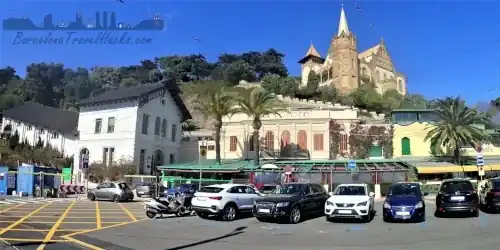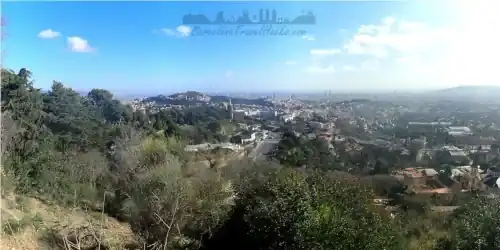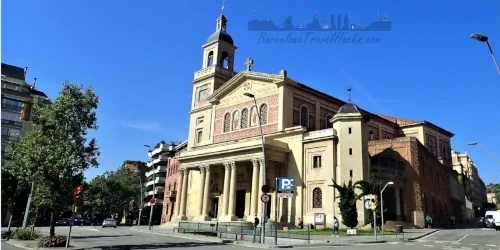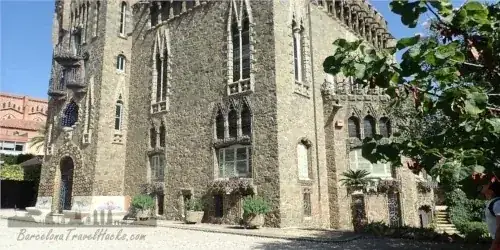
CosmoCaixa Science Museum – Rainforest & Planetarium
Explore Barcelona’s top science museum. Hands-on physics, indoor rainforest, planetarium shows & more. Free entry for La Caixa customers
About CosmoCaixa Science Museum
Barcelona Museu de la Ciència CosmoCaixa, like Museo de Ciències Naturales, Forum, is one of several science museums in Barcelona. CosmoCaixa covers physics, geology, biology, and astrology. This interactive science museum in Barcelona is known as one of the best and most technological in Europe. CosmoCaixa is not run by Barcelona City Council but is owned and operated by the Spanish banking giant La Caixa.
CosmoCaixa was named European Museum of the Year in 2006, just two years after its grand reopening in 2004. This prestigious award recognized the museum’s innovative approach to science education, immersive design, and commitment to accessibility. Today, it remains one of the most acclaimed science museums in Barcelona, offering a unique blend of interactive exhibits and architectural heritage.
CosmoCaixa Science Museum History
The historic part of the building was built between 1904 and 1909 by architect Josep Domènech i Estapà, originally serving as housing for blind girls. It's a beautiful example of modernist architecture in Sant Gervasi, with red brick and decorative mosaics.
In 1979, the building was expanded and opened to the public in 1981 as a science museum called Caixa. Later redesigns led to the current CosmoCaixa museum, which opened in 2004 with 50,000 square metres of exhibition space and was named European Museum of the Year in 2006.
Image Gallery For CosmoCaixa Science Museum
Click on any of the 40 images to open full screen gallery player. Note that viewing images is subject to our Fair Use Policy.
Visiting CosmoCaixa Science Museum
Access to the Museum is from Carrer d'Isaac Newton opposite the Shark Submarine. Once inside, you descend to the lower floor via a spiral atrium ramp surrounding a hanging tree with root structure.
The first section of the CosmoCaixa museum is an interactive physics zone where visitors can engage with hands-on experiments that explain heat, electricity, sound, pressure, plasma, magnetism, and light refraction. This leads into the biology and evolution section before reaching the museum's most prominent feature.
CosmoCaixa museum features one of the most spectacular indoor rainforest aquariums in Europe. One entire side of the museum is a giant glass wall offering panoramic views into the aquarium, where you can observe live fish swimming through a lush, swamp-like ecosystem modeled after the Amazon Rainforest.
From the main hall, a hidden staircase descends half a floor into a darker, subterranean zone. Here, visitors can peer into the aquarium from below through illuminated windows. This section also houses live reptiles, including snakes and lizards, adding to the immersive jungle atmosphere.
The aquarium is also accessible via a winding path through the rainforest itself. As you walk through this humid environment, you’ll encounter small mammals, tropical plants, and hanging vines. The path exits via a bridge over the rainforest lagoon, offering a unique perspective of the treetops and canopy above.
Before leaving, be sure to walk through the courtyard to the rooftop area of the aquarium. Here, elevated viewing galleries let you look down into the rainforest from above — a truly unmissable experience that makes CosmoCaixa one of the most immersive science museums in Barcelona.
When in the museum, check the show times for the planetarium, a mini cinema with a projection system that puts you in the middle of space to explore the galaxy. The Foucault pendulum exhibit demonstrates Earth’s rotation — a classic science experiment brought to life.
The museum also regularly hosts temporary exhibitions. The CosmoCaixa museum is a fantastic child-friendly museum, with most exhibits designed for children and equally engaging for adults. I recommend allowing two to three hours to fully explore the museum.
CosmoCaixa is my favorite science museum in Barcelona because of the immersive physics exhibits and the incredible indoor rainforest aquarium. The combination of tactile learning and atmospheric design makes it a standout experience for both kids and adults.
When I visited, I paid €5 for a ticket at the museum reception. Tickets can also be purchased from the CosmoCaixa website, and entry is free for La Caixa customers.
CosmoCaixa Science Museum Opening Hours
- Monday to Sunday and holiday's: 10:00 am to 8:00 pm
- Short Days: 24th of December; 5th of January; 10:00 am to 6:00 pm
- Closed: Monday's; 25th of December; 1st and 6th of January
Accessibility & What to take to CosmoCaixa Science Museum
The museum is fully accessible from the street with no steps. Lifts provide access to all rooms for wheelchairs and pushchairs. The wide, open layout makes it an accessible museum in Sant Gervasi and a top museum for children.
Bicycle anchorage points are located in front of the museum.
Small bags (like a 10L rucksack) are permitted, but larger bags may need to be stored at reception.
CosmoCaixa Science Museum Summary of Prices
Getting to CosmoCaixa Science Museum
Address: Carrer d'Isaac Newton 26, Barcelona, 08022
Nearest FGC station: Avenida Tibidabo (L7 line). Use a T-Casual or Hola Barcelona travel card.
Saba Pay parking is available behind the museum at Calle dels Quatre Camins 89 — ideal for those driving to one of the best museums near Tibidabo.
Documents for CosmoCaixa Science Museum
Wikiloc Trail for CosmoCaixa Science Museum

Please sign in with Google to view the Wikiloc Route map.
Sign in with GoogleWeather for CosmoCaixa Science Museum
Where to stay near CosmoCaixa Science Museum
Nearby Attractions to CosmoCaixa Science Museum
 FGC+BUS
FGC+BUS
TC2 Bus & Tibidabo Funicular (Cuca de Llum) from Plaza J.F. Kennedy
Ride the Cuca de Llum Funicular to Tibidabo Amusement Park. Spain’s first funicular, now modernized. History, ticket options, and how to get there
Read more >
 FGC
FGC
Barcelona to Tibidabo via Forest Path & Fabra Observatory
Easy 3.44 km forest trail from FGC Av. Tibidabo to Tibidabo Church, viewpoint, and amusement park via Fabra Observatory
Read more >
 FGC
FGC
Avenida Tibidabo – Historic Boulevard & Modernist Villas
Walk this grand avenue from Plaza John F Kennedy to Tibidabo. Admire modernist villas, historic mansions, and dine in a restored architectural gem
Read more >
 FGC
FGC
Roman-Style Church in Sant Gervasi Barcelona
Discover Mare de Déu de la Bonanova, a hidden Roman-style church in Sant Gervasi with Catalan mass, organ music, and rich architectural history
Read more >
 FGC
FGC
Gaidí's Torre Bellesguard Gaudí Castle – Tours & History
Explore Gaudí’s hidden castle house in Barcelona. Book guided tours in English. Visit the mosaic staircase, rooftop terrace, and medieval garden
Read more >
 FGC
FGC